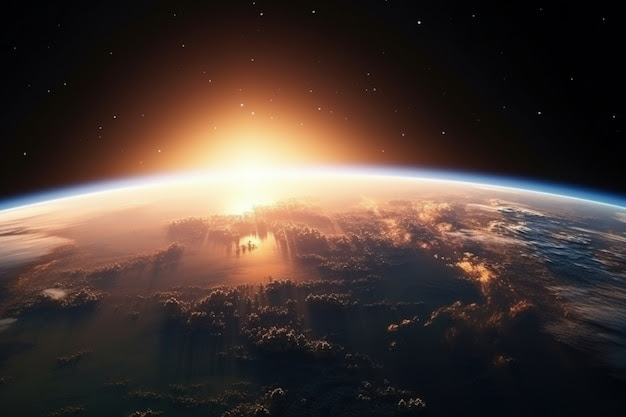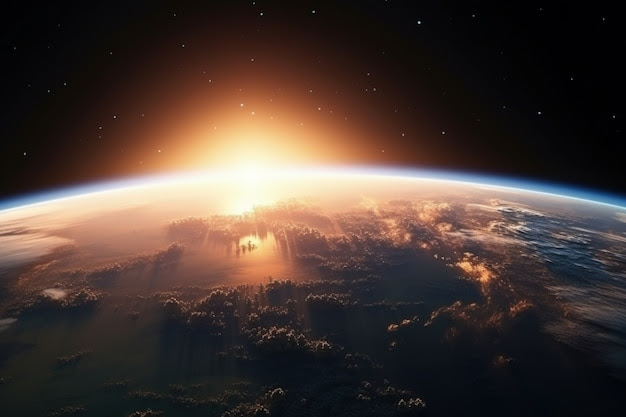
The Earth’s atmosphere is flooded by a stream of high-energy particles from deep space, known as galactic cosmic radiation. Solar winds protect us from this flux, so that galactic cosmic radiation, which passes through the Earth’s atmosphere, decreases as solar activity increases.
Researchers have hypothesized that a decrease in the flow of high-energy particles leads to a reduction in cloud cover. By reflecting solar radiation, clouds help to cool the climate: their reduction could therefore lead to global warming.
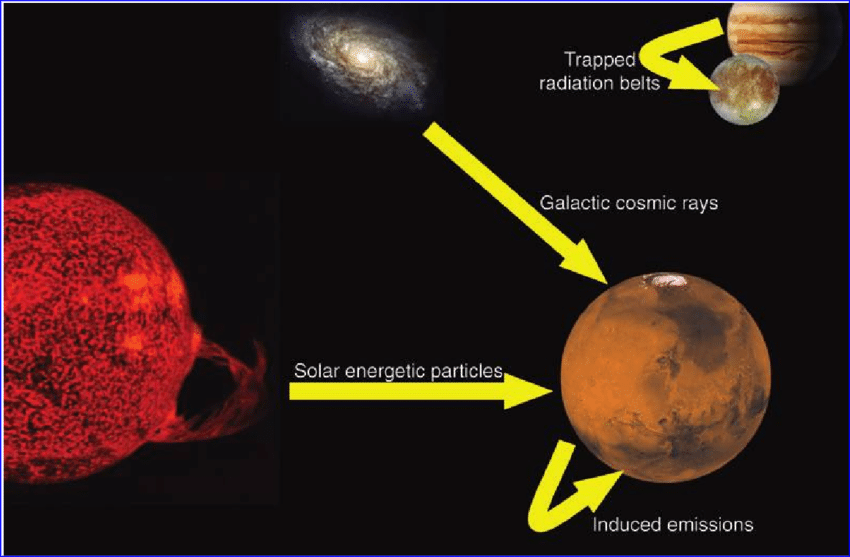
Kirkby, J., 2007: Cosmic rays and climate. Surveys in Geophysics, 28, 333-375.
. Other researchers go further and attribute the warming of the last fifty years to an increase in solar activity and the resulting decrease in cosmic rays. So what exactly is the link between cosmic radiation and global warming?
Is cloud cover linked to cosmic radiation?
Some studies
Svensmark, H. and Friis-Christensen, E., 1997: Variation of cosmic ray flux and global cloud coverage – A missing link in solar-climate relationships. Journal of Atmospheric and Solar-Terrestrial Physics, 59, 1225-1232.
have shown simultaneous variations in galactic cosmic ray flux and global cloud coverage over periods of 5 to 10 years, covering a fraction of the 11-year solar cycle. These correlations did not stand up to further studies involving longer periods, specific cloud types or particular regions of the atmosphere.Other studies have focused on Galactic cosmic ray variations linked to Forbush decreases.
A Forbush event is characterized by a decrease in cosmic radiation due to a rapid but transient increase in solar activity.
Forbush events last only a few days and are therefore, a priori, easier to observe. Unfortunately, there are few events of this type, and even fewer major events likely to generate an atmospheric response large enough to be detected, given the very wide variability of cloud cover.
The results are therefore contradictory: some studies show a slight correlation between cosmic rays and cloud cover.
Svensmark, H., Bondo, T. and Svensmark, J., 2009: Cosmic ray decreases affect atmospheric aerosols and clouds. Geophysical Research Letters, 36, L15101, doi: 10.1029/2009GL038429.
while others show no link
Calogovic, J., Albert, C., Arnold, F., Beer, J., Desorgher, L. and Flueckiger, E. O., 2010 : Sudden cosmic ray decreases: No change of global cloud cover. Geophysical Research Letters, 37, L03802.
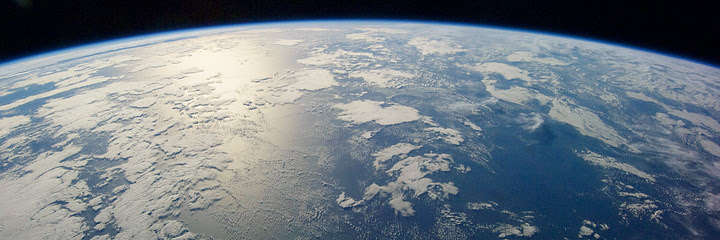
.
Does cosmic radiation contribute to aerosol formation?Scientists have sought to understand the atmospheric process(es) that might link cosmic radiation to cloud formation. The most studied theory postulates the existence of a chain of processes that successively links cosmic radiation, the formation of aerosol ions and the formation of clouds.
Air molecules that lose or gain one or more electrons become electrically charged, and are referred to as ions.
in the atmosphere, nucleation.
Nucleation is the formation of a small nucleus, in the liquid or solid phase, from molecules in the gaseous phase.
aerosolsAn atmospheric aerosol is a particle suspended in the atmosphere.
The formation of aerosols is followed by the formation of nanometric-sized aerosols, their growth to sizes sufficient to act as condensation nuclei for clouds (in the order of a hundred nanometers) and, finally, cloud formation.
The formation of new particles from gaseous precursors is a phenomenon well known to aerosol researchers. It is regularly observed in the natural atmosphere and reproduced in atmospheric simulation chambers. However, the mechanism by which this nucleation process takes place and the variables that control it remain an unsolved scientific question.

In 2011, the CLOUD experiment
Kirkby, J. et al. 2011: Role of sulphuric acid, ammonia and galactic cosmic rays in atmospheric aerosol nucleation. Nature, 476(7361), 429-433.
(Cosmics Leaving Outdoor Droplets) conducted at CERN (Geneva) has shown that the rate of nucleation is sensitive to the presence of ions.These ions are produced by a proton beam that simulates cosmic rays.
But is even more sensitive to the presence of ammonia and, no doubt, volatile organic compounds. Ions increase nucleation by a factor of 2 to 10, and ammonia by a factor of 100 to 1000. Cosmic radiation (the source of ionization) can therefore only have a decisive effect on the nucleation of new particles where concentrations of ammonia and organic compounds are relatively low and cosmic radiation strong, such as in the upper atmosphere or in the polar regions.
However, nucleation is only one stage in the cloud formation process.
The nucleated particles then have to grow, agglomerating with each other, because only when they reach a size of 100 to 200 nanometers can they become good condensation nuclei and form cloud droplets. This coagulation process can last several days in the atmosphere. It is the nature and quantity of these condensation nuclei that determine the properties of clouds, not the small particles produced by nucleation.
The CLOUD experiment gives no indication of the formation of condensation nuclei, since it is only interested in the first instants of aerosol formation. It is therefore necessary to rely on numerical models representing the atmospheric aerosol cycle to assess the importance of nucleation in the cloud formation process. These models indicate that, even if the concentration of the smallest particles fluctuates with cosmic radiation, the number of condensation nuclei and cloud water droplets will vary relatively little.
Could cosmic radiation have a significant effect on global warming?Laboratory measurements and modelling studies suggest that the ionization of the Earth’s atmosphere by cosmic radiation may promote the formation of very small aerosols in the atmosphere. This is in line with certain high-altitude observations of the nucleation process. However, the magnitude of this mechanism seems too small to influence condensation nuclei concentrations and cloud quantity and properties, either during a solar cycle (11 years) or on the scale of the last century.
Given the current state of knowledge, it is unlikely that cosmic rays amplify climatic variations due to variations in solar activity. Moreover, there does not appear to have been any decrease in cosmic radiation reaching the atmosphere over the last fifty years.
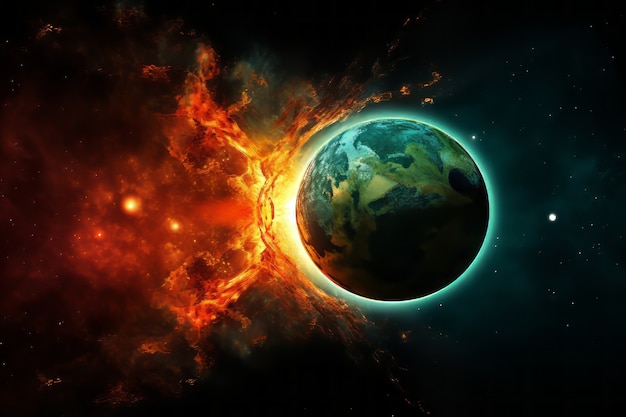
McCracken, K.G. and Beer, J., 2007: Long-term changes in the cosmic ray intensity at Earth, 1428-2005. Journal of Geophysical Research, 112, A10101, doi: 10.1029/2006JA012117.
This makes the theory of cosmic radiation-induced global warming rather implausible. Nevertheless, the subject is not closed, and research continues in the CLOUD experiment and on other avenues such as electrical currents in the atmosphere and interactions between the highest layers of the atmosphere, such as the ionosphere, and the troposphere, where clouds are formed.Refererences
https://www.nature.com/articles/nature10343
https://www.sciencedirect.com/science/article/abs/pii/S0016706111000905
https://agupubs.onlinelibrary.wiley.com/doi/full/10.1029/2010JA016105
https://agupubs.onlinelibrary.wiley.com/doi/10.1029/2006JA012117
https://agupubs.onlinelibrary.wiley.com/doi/pdf/10.1029/2006JA012117

